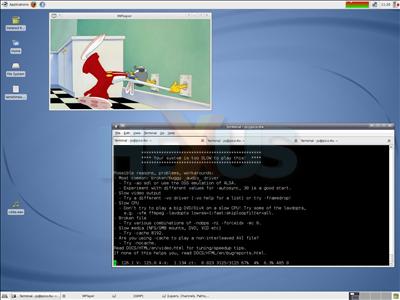Round Two: Accelerated Video Playback
GPU-accelerated playback of media fell out of fashion for a while, on every OS - once CPUs became so fast that everybody could playback DVD without worrying, people largely stopped caring about it. Unfortunately, whilst that concern has re-emerged in these days of high-bitrate HD media, the standard interface in Linux for this kind of acceleration, X-Video Motion Compensation (XvMC), is firmly rooted in the days of MPEG2-only DVD.
As a result, efforts have been made by various vendors to restart work on GPU-accelerated playback of media. If you read my Pico-ITX review, you'll see in there that VIA has its own modified version of the MPlayer media-player app. named VeMP, which is, in theory, capable of accelerated playback (not that I could get it to work without crashing). VIA's pretty much the first to do anything concrete (VeMP started in 2004), but the VeMP alterations haven't seen their way into "normal" MPlayer, nor into other player apps.
Since then, other companies have made some efforts, with varying results. Intel started work on a new API to replace XvMC, named "Video Acceleration API", in 2006 - but there's no usable concrete implementation yet. At the other end, ATI's Catalyst 8.10 release included its own library and implementation, named X-Video Bitstream Acceleration, based on Avivo HD - unfortunately, ATI hasn't actually told anyone how to USE it yet, so no applications have been able to take advantage of this.
Last, but apparently not least, is NVIDIA. The last horse to enter the race (cynics might even suggest it was in a direct response to Catalyst 8.10), NVIDIA's 180-series drivers added a library for its Video Decode & Presentation API for UNIX, much like ATI's XvBA, similar to PureVideo HD. Unlike ATI, however, NVIDIA got one thing right - alongside VDPAU came patches for MPlayer to actually make use of it. Assorted projects have taken these patches as a basis for working NVIDIA-only acceleration into their own apps - the next MythTV release, for example, has VDPAU abilities.



